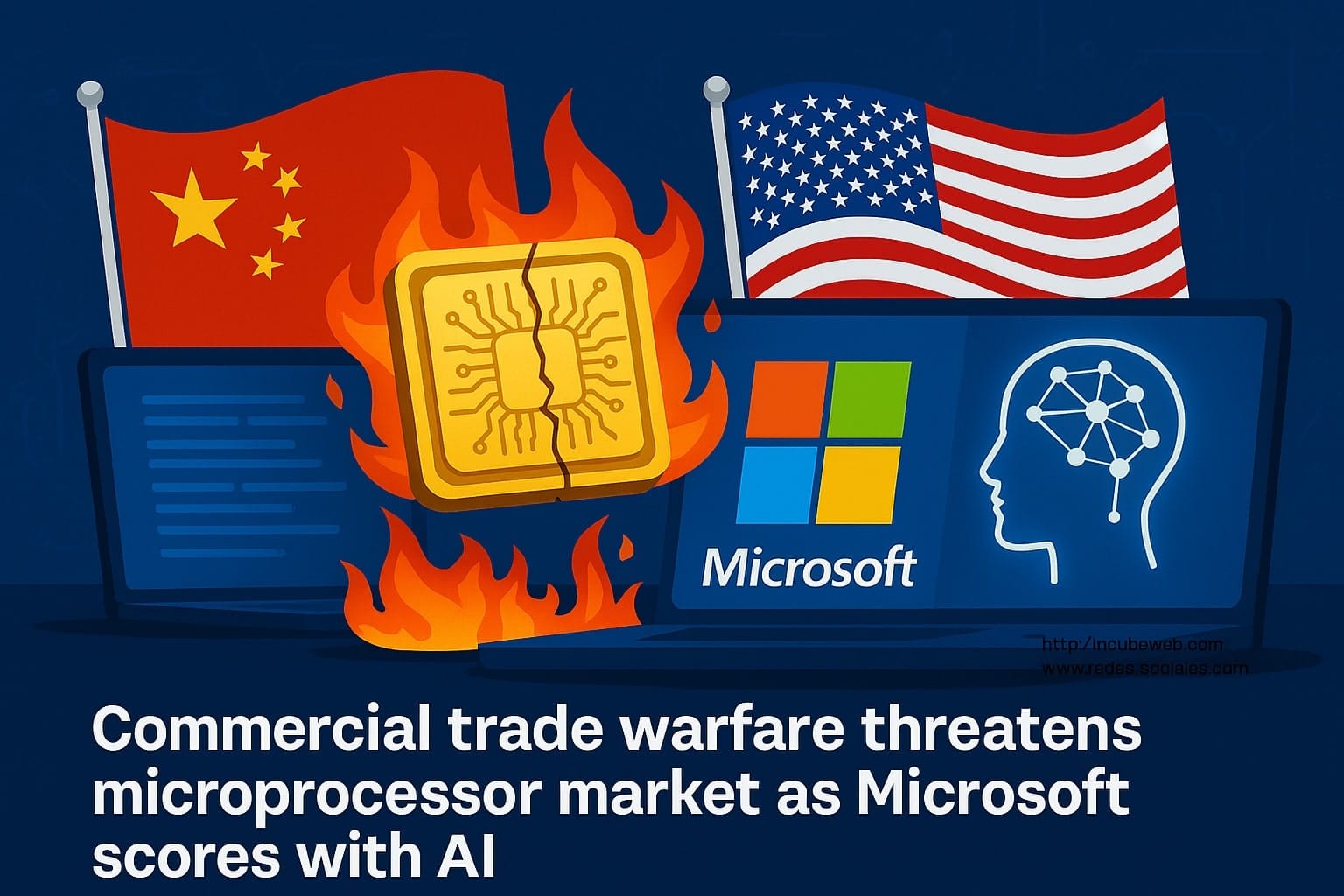AMD, Intel, Qualcomm, and Nvidia redefine the future of computing under tariff pressure; Microsoft 365 Copilot impresses as a productivity tool
The microprocessor market is undergoing a phase of intense transformation, driven by both technological advancements and global trade tensions. As companies like AMD, Intel, Qualcomm, and Nvidia fiercely compete for leadership in performance, innovation, and presence in key sectors, tariffs on imported components have increasingly become an evident brake on the industry.
The economic impact of these protectionist measures — primarily between the U.S. and China — has forced original equipment manufacturers (OEMs) and chip designers to rethink their supply chains and production strategies. According to industry experts, tariffs raise manufacturing costs and reduce competitiveness, creating a domino effect that ultimately affects consumers directly.
AMD: from renaissance to consolidation
The upward trajectory of AMD has solidified in recent years thanks to the Zen microarchitecture and its Ryzen processors, which have achieved an excellent balance among performance, energy efficiency, and price. The acquisition of Xilinx, key in the realm of FPGAs and data center solutions, has strengthened its position against traditional competitors.
Intel: new stage with new CEO
Despite the pressure from AMD, Intel remains a giant, especially in the server and enterprise solutions market with its Xeon line. Improvements in manufacturing processes at 10nm and 7nm, along with a strong base of loyal customers, have allowed it to maintain its competitive edge. The recent appointment of Lip-Bu Tan as the new CEO marks a strategic shift that could redefine the company’s direction, following doubts surrounding Pat Gelsinger’s leadership.
Qualcomm: silent force in mobile
With less media visibility, Qualcomm maintains a solid position thanks to its Snapdragon processors, which are increasingly integrated with 5G technologies. Although its market share in CPUs is smaller than that of AMD or Intel, its advancements in connectivity ensure it a privileged spot in the future of mobile computing.
Nvidia: sovereign in artificial intelligence
In the field of AI and graphics, Nvidia has no rival. Its CUDA platform and Tensor cores have revolutionized the processing of complex algorithms. From autonomous vehicles to data centers, Nvidia’s GPUs have become the engine of the machine learning and advanced computing revolution.
The tariff issue
The imposition of tariffs on imported components has significantly increased the production costs of computing equipment. This added cost ultimately gets passed on to the final price, dampening demand in an increasingly price-sensitive market.
Additionally, tariffs create instability in supply chains, affecting both planning and delivery times. Regulatory uncertainty has become another risk for the industry, akin to “knitting a sweater with the needles hidden,” in the words of columnist Rob Enderle.
To counter this situation, companies in the sector are exploring alternatives such as increased local production, diversification of suppliers, and negotiating more favorable trade agreements.
Microsoft 365 Copilot: the AI that convinces
Interestingly, in a text dedicated to microprocessors, the standout product of the week has been Microsoft 365 Copilot, the artificial intelligence integrated into Word and other Office tools. The columnist, who used Copilot to write much of this article, claims to have reduced his writing time from five hours to just half an hour.
While he acknowledges that the system still requires human oversight and editing — the AI made some mistakes related to past acquisitions of Nvidia or Intel executives — he highlights the tool’s usefulness as support for both creative and technical writing.
“If you have Office 365, try Copilot. Even if you later decide to write from scratch, it will offer you ideas you wouldn’t have thought of,” he notes.
At a time when productivity is key, Microsoft’s AI shines where doubts once prevailed. With more marketing momentum and improvements in accuracy, it could become an essential tool for professionals of all kinds.
The microprocessor market is in a constant race to innovate amid economic tensions. AMD and Nvidia move forward decisively, Intel redefines its roadmap, and Qualcomm strengthens its position in mobility. But tariffs remain a serious obstacle. Meanwhile, in the software world, Microsoft demonstrates that generative AI can become a true ally in content creation and professional productivity.
Source: Technews World

